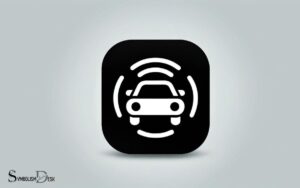Symbol for Pi in Math: Mathematics!
The symbol for pi (π) is an iconic representation in mathematics, symbolizing the ratio of a circle’s circumference to its diameter, approximately equal to 3.14159. This constant is essential in various branches of mathematics and its applications.
Pi (π) is a mathematical constant that is critical to the study of circles. Its value is approximately 3.14159, but it’s an irrational number, meaning it has an infinite number of non-repeating decimal places.
Examples and uses of pi include:
Pi’s infinite and pattern-less sequence of digits has fascinated mathematicians and enthusiasts for centuries.

Key Takeaway
Understanding the Pi Symbol (π) in Mathematics: Its Value and Applications
| Description | Detail |
|---|---|
| Symbol | π |
| Name | Pi |
| Value (approximation) | 3.14159 |
| Nature | Irrational number |
| Origin | Ancient Greek mathematics |
| First use of symbol (π) | By William Jones in 1706 |
| Recognized in Calculus by | Leonhard Euler in 1737 |
| Key Uses in Mathematics | Geometry, Trigonometry, Calculus |
| Applications in Science | Physics, Engineering, Technology |
The Origin of Pi
The symbol for pi in mathematics, denoted by the Greek letter π, has its origin in ancient civilizations’ attempts to measure and understand the relationship between a circle’s circumference and its diameter.
The earliest recorded approximations of pi are found in ancient Egypt and Babylon, where it was estimated to be around 3.125.
The fascination with this irrational number continued in ancient Greece, where mathematicians Archimedes and Euclid made significant contributions to understanding pi’s properties.
The symbol π was first used in its mathematical sense by Welsh mathematician William Jones in 1706, and it was popularized by Swiss mathematician Leonhard Euler in the 18th century.
Since then, pi has become a fundamental constant in mathematics, with its value approximated to millions of decimal places using various mathematical methods and computer algorithms.
Properties of Pi
Pi is a fundamental constant in mathematics, representing the ratio of a circle’s circumference to its diameter. Understanding the properties of pi is crucial for various mathematical calculations and equations.
Some of the key properties of pi include:
- Irrationality: Pi is an irrational number, meaning it cannot be expressed as a simple fraction.
- Transcendence: Pi is also a transcendental number, implying that it is not a root of any non-zero polynomial equation with rational coefficients.
- Infinite decimal expansion: The decimal representation of pi goes on infinitely without repeating.
- Circle calculations: Pi is extensively used in calculations involving circles, such as area, circumference, and volume.
- Importance in mathematics: Pi plays a vital role in various mathematical disciplines, including geometry, trigonometry, and calculus.
Pi in Geometry
In geometry, the concept of Pi is fundamental to understanding the properties of circles and the calculations of their areas.
Pi is used in formulas to calculate the circumference and the area of a circle, and it plays a crucial role in various geometric calculations.
When discussing Pi in geometry, it is essential to consider its application in the context of points on a circle and the relationships between them.
Pi in Circle Formulas
The calculation of circle properties often involves employing the mathematical constant π in various formulas. π is an essential component in geometry, particularly in the context of circle calculations.
Here are some key circle formulas where π plays a crucial role:
- Circumference: C = 2πr
- Area: A = πr^2
- Diameter: d = 2r
- Arc Length: L = rθ
- Sector Area: A = (πr^2 * θ) / 360
These formulas demonstrate the integral role of π in determining various properties of circles. Understanding these formulas is fundamental for solving problems related to circles in geometry.
Pi in Area Calculations
Employing the mathematical constant π in area calculations for geometric shapes is essential for computing their surface area. In geometry, π is commonly used in formulas for finding the area of circles, ellipses, and other curved surfaces.
The table below provides some common geometric shapes and their respective area formulas involving the constant π.
| Geometric Shape | Area Formula |
|---|---|
| Circle | A = πr² |
| Sphere | A = 4πr² |
| Ellipse | A = πab |
| Cylinder | A = 2πrh + 2πr² |
| Cone | A = πr(l + r) |
These formulas demonstrate the significance of π in calculating the areas of various geometric shapes, enabling precise and accurate measurements.
Pi in Trigonometry
Pi is essential for solving problems in trigonometry by providing the ratio of a circle’s circumference to its diameter.
In trigonometry, pi is used in various ways, including:
- Calculating the period and frequency of sine and cosine functions
- Determining the value of the trigonometric functions for angles in radians
- Understanding the properties of circles and their relationship to angles
- Solving problems involving periodic phenomena, such as waves and vibrations
- Finding the areas of sectors and segments in circular regions
These applications demonstrate the fundamental role of pi in trigonometry, enabling precise calculations and measurements in the context of angles, circles, and periodic functions.
Understanding the significance of pi in trigonometry is crucial for mastering the principles and applications of this branch of mathematics.
Pi in Calculations
An essential element in accurate mathematical calculations, pi facilitates precise computations and measurements across various mathematical contexts, including geometry and physics.
In geometry, pi is crucial for calculating the circumference and area of circles, as well as the volume and surface area of spheres and cylinders. In physics, pi is often used in equations related to waves, oscillations, and rotational motion.
Additionally, pi plays a vital role in engineering and technology, where it is utilized in formulas for calculating forces, stresses, and fluid dynamics.
Its value, approximately 3.14159, is utilized in a wide array of mathematical calculations, making it indispensable in ensuring accuracy and precision in numerous scientific and technical applications.
Pi in Physics
Pi plays a crucial role in various areas of physics, including quantum mechanics and the theory of relativity. In quantum mechanics, Pi appears in equations describing the behavior of particles at the atomic and subatomic levels.
In the realm of relativity theories, Pi is utilized in the mathematical formulations that govern the behavior of space, time, and gravity.
Pi in Quantum Mechanics
The role of the mathematical constant π in quantum mechanics is fundamental to understanding the behavior of particles at the quantum level.
- π appears in the Schrödinger equation, which describes how the quantum state of a physical system changes over time.
- It is also present in the Heisenberg uncertainty principle, highlighting the limitations on simultaneously measuring certain pairs of observables of a particle.
- The quantization of angular momentum in quantum mechanics involves multiples of π, influencing the allowed energy levels in a system.
- In quantum field theory, scattering amplitudes and Feynman diagrams involve π, representing the probability of different particle interactions.
- The mathematical description of periodic phenomena in quantum systems, such as wave functions and energy eigenstates, often involves π.
Pi in Relativity Theories
Incorporating the mathematical constant π into the equations of relativity theories provides essential insights into the behavior of spacetime and matter.
π appears in various fundamental equations of physics, such as the Schwarzschild radius in general relativity, which determines the size of a black hole, as well as in the formulas for relativistic effects like time dilation and length contraction.
For instance, in Einstein’s field equations, which describe the gravitational interactions of massive objects, π contributes to the understanding of how matter and energy curve spacetime.
The incorporation of π into these equations allows physicists to make predictions about the behavior of celestial bodies, the nature of gravitational waves, and the dynamics of the universe.
Pi in Engineering
Engineers frequently rely on the mathematical constant pi in their calculations and designs.
Pi plays a crucial role in various engineering applications, including:
- Structural Analysis: Pi is used in formulas for calculating stress, strain, and deflection in structures such as bridges and buildings.
- Fluid Mechanics: Pi appears in equations related to fluid flow, pressure, and turbulence, essential for designing pipelines and hydraulic systems.
- Electrical Engineering: Pi is utilized in calculations related to alternating current (AC) and electromagnetic field analysis.
- Control Systems: Pi is involved in the design of control systems for processes such as temperature regulation and robotic movements.
- Signal Processing: Pi is fundamental in digital signal processing algorithms for filtering, modulation, and encoding.
The widespread use of pi in engineering underlines its indispensable nature in the field. Transitioning to the subsequent section about ‘pi in modern applications’, the impact of pi continues to expand into new and innovative areas.
Pi in Modern Applications
Pi is utilized in a myriad of modern applications across various scientific and technological disciplines. In physics, it is used in calculations related to waves, oscillations, and other periodic phenomena.
Within engineering, Pi is fundamental in the design and analysis of all types of structures, from buildings to bridges, and in the development of electrical circuits. In the realm of computing and communication technologies, Pi plays a crucial role in signal processing and information theory.
Furthermore, Pi is essential in various scientific simulations and modeling, such as climate modeling and fluid dynamics.
In the modern age of data science and machine learning, Pi is embedded in numerous algorithms and mathematical models.
Overall, the significance of Pi in modern applications underscores its indispensable role in advancing scientific and technological frontiers.
Conclusion
The symbol for pi in mathematics has a rich history and plays a crucial role in various fields such as geometry, trigonometry, calculations, physics, and engineering. The origins of the symbol for pi (π) can be traced back to the 18th century when it was first popularized by mathematician William Jones. Its adoption standardized the representation of the ratio of a circle’s circumference to its diameter, simplifying complex mathematical expressions. Today, its r symbol meaning in mathematics extends beyond circles, appearing in formulas for waves, probabilities, and even quantum mechanics, underscoring its universal importance.
Its value has been calculated to over 31 trillion decimal places, making it a fascinating and complex mathematical constant.
Its significance in modern applications continues to expand, showcasing the enduring relevance and importance of pi in the field of mathematics.





